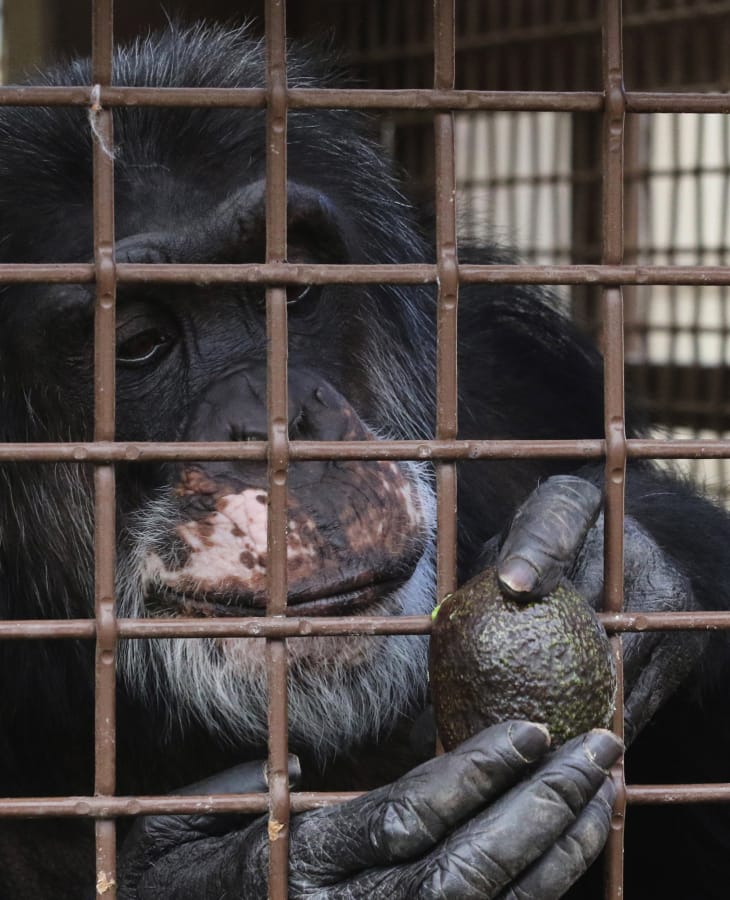CLE ELUM — The matriarch of Chimpanzee Sanctuary Northwest is tired of waiting for her dinner.
Her name is Negra, and she expects to be fed on time. Early is OK, too. So she’s peering down from an overhead perch, clapping impatiently as sanctuary co-director Diana Goodrich loads a tray with slices of baked pumpkin, leeks, and bowls of fresh snap peas and pears.
“I know, I know,” Goodrich croons.
By the time Goodrich walks the tray to the open-air veranda where the chimps dine during nice weather, all seven of the sanctuary’s primate residents are lined up more or less in a row, a phalanx of black fur and smacking, prehensile lips.
Slight and blond, Goodrich leans forward and huffs a chimp-style greeting. She begins threading food a chunk at a time through the bars. Except for a little jostling, the chimps wait their turns.



